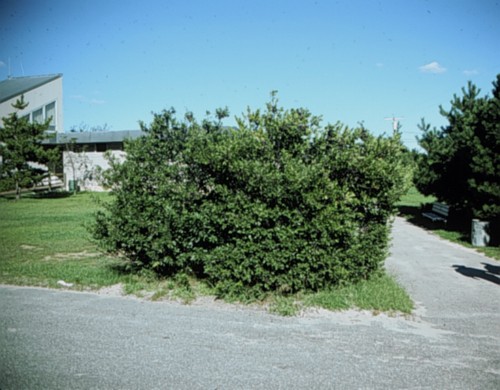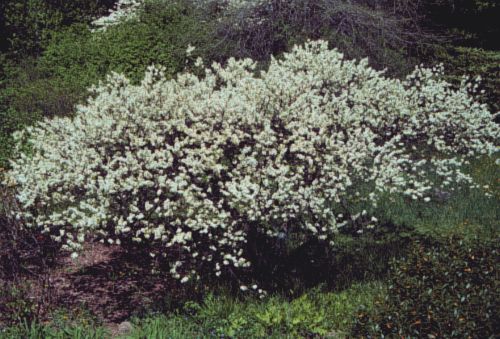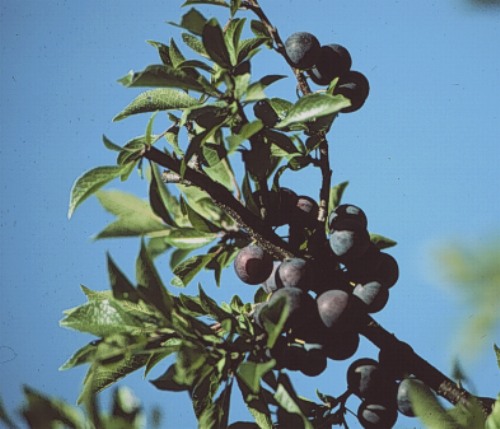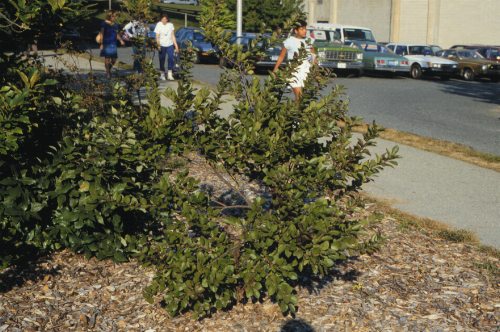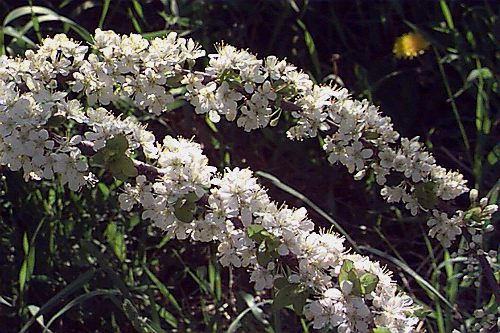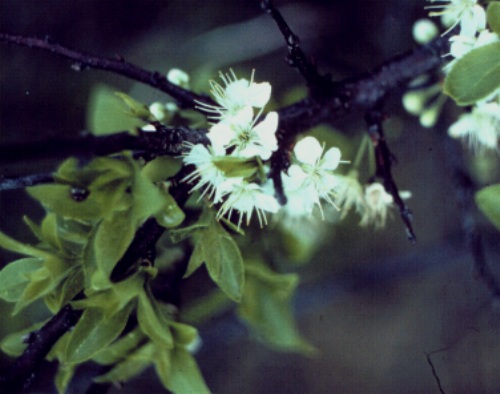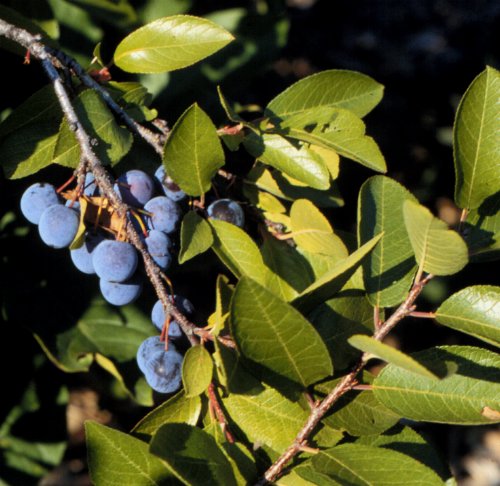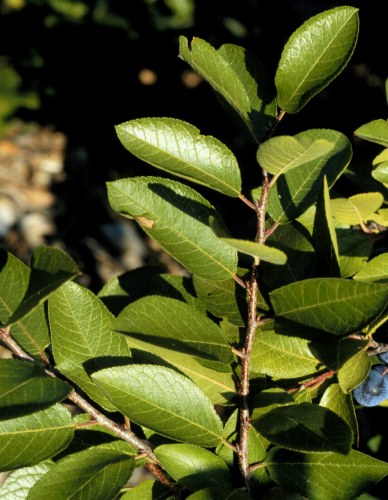Prunus maritima
Beach Plum
Rosaceae
ExpandHabitat
- native to Northeastern United States and New Brunswick
- hardy in zone 3
Habit and Form
- a medium deciduous shrub
- a rounded, densely branched shrub
- grows to 6' tall
- plant tends to sucker
- medium texture
- fast growth rate
Summer Foliage
- alternate leaf arrangement
- simple, deciduous leaves
- leaves are elliptical in shape
- 2" to 3" long
- leaves have a serrated leaf margin
- dull green leaf color
- petiole is pubescent with glands near the leaf base
Autumn Foliage
- somewhat showy
Flowers
- white flowers
- flowers borne singly
- flowers are 0.5" in diameter
- flowers in May
Fruit
- fruits are dull purple color
- 1" in diameter
- ripen in august
- edible
Bark
- reddish brown bark
- horizontal lenticels
Culture
- full sun
- easily transplanted from bare root, B&B, or containers
- soil adaptable
- prefers a well-drained soil
- prune after flowering in spring
- salt tolerant
Landscape Use
- specimen
- patio plant
- small groupings
- for flowering effect
- for edible fruit
- foundation plant
Liabilities
- short-lived
- many insect and disease problems
ID Features
- a deciduous shrub
- up to 6' tall
- suckers
- simple, serrated leaves
- glands on petiole near leaf base
- white flowers in spring
- dull purple edible fruits
Propagation
- by softwood cuttings
Cultivars/Varieties
var. flava - This naturally-occuring plant bears yellow fruit and is found on Cape Cod.
'Eastham', 'Hancock' and 'Squibnocket' - These cultivars have been selected for exceptional fruit qualities, which are often used for jams and jellies. They are not widely-available in commerce.
